Tour de France tech: All the men's and women's winners combined
Which bike brand came out on top after the men's and women's Tours de France?
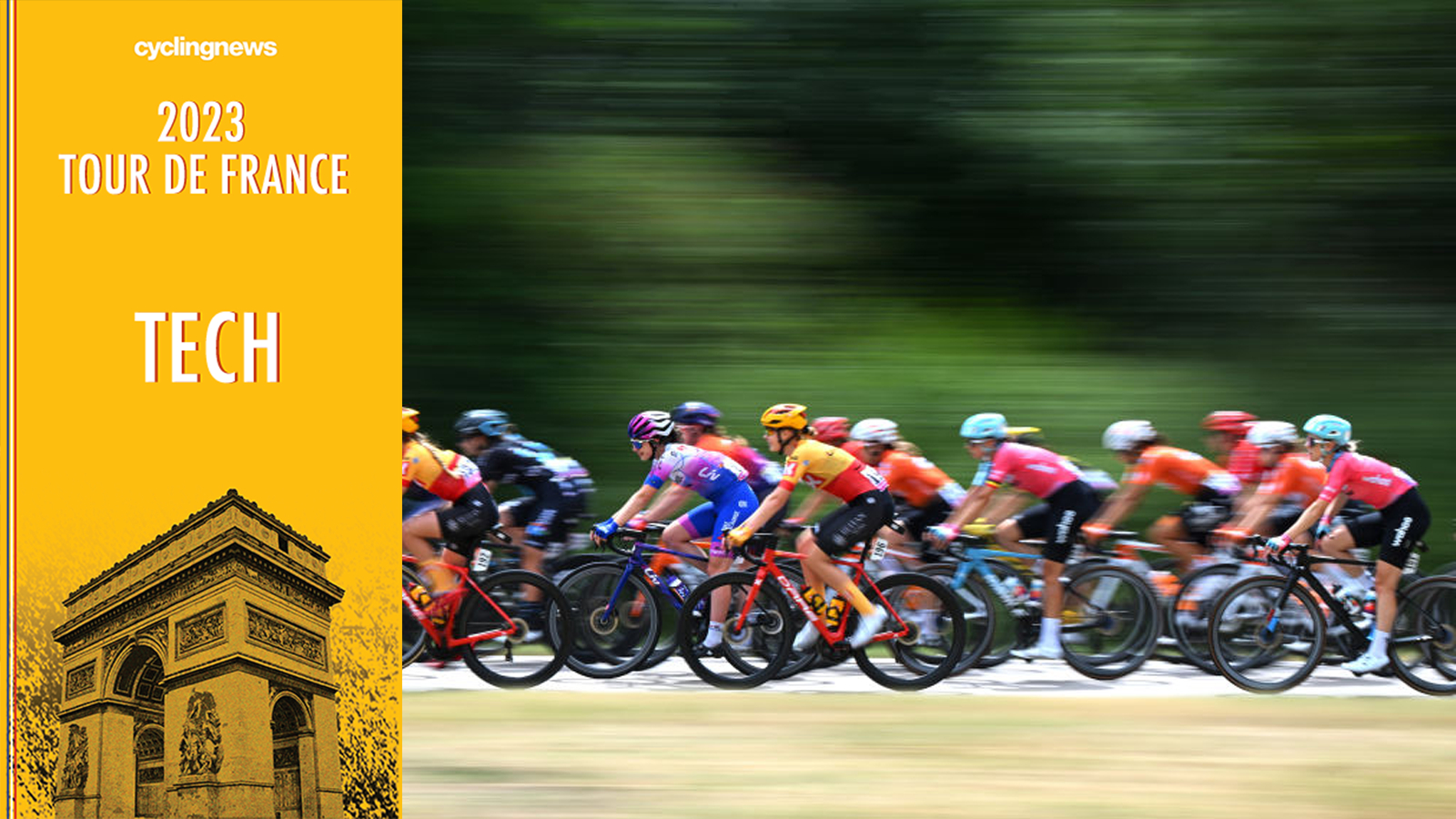
After a frantic July, the Tour de France and the Tour de France Femmes Avec Zwift have both officially drawn to a close.
Jonas Vingegaard (Jumbo-Visma) and Demi Vollering (SD-Worx) are our winners, and there have been impressive feats of achievement from Jasper Philipsen, Lotte Kopecky, Kasia Nieuwiadoma, Giulio Ciccone, all of which taking home leaders jerseys, while there have been stage wins for dozens of others across both races.
Over the course of the month, we’ve amalgamated all the data we can on the equipment each stage winner has used to see what we can tease out in terms of greater trends. I’m very much aware that it’s the riders, not the bikes that win stages, and that a sample size of 29 isn’t necessarily statistically significant, but this is a cycling website, not a scientific journal.
We have two years of data from the men's race to call back on too, so if you want to get properly nerdy you can see who won with what in 2022 and in 2021 too. This year the Tour de France Femmes has added some additional data points, allowing us to not only form a better picture of tech trends as a whole, but also compare and contrast across both pelotons.
This all forms part of the greater Tour de France tech maelstrom, which tends to begin with prototype bikes spotted at the Dauphiné, encompasses our mega tech gallery from the Tour itself, and then winds up here. Without further ado, then, let’s dive into the headline winners and then we can get more in-depth.
Men's winning tech
| Header Cell - Column 0 | Winner (Team) | Bike | Wheels | Tyres | Cockpit | Tyre technology | Groupset | 1x or 2x | Brakes |
|---|---|---|---|---|---|---|---|---|---|
| 1 | Adam Yates (UAE Team Emirates) | Colnago V4Rs | Enve | Continental | Integrated | Tubeless | Shimano | 2x | Disc |
| 2 | Victor Lafay (Cofidis) | Look Blade 795 RS | Corima | Michelin | Integrated | Tubular | Shimano | 2x | Disc |
| 3 | Jasper Philipsen (Alpecin-Deceuninck) | Canyon Aeroad CFR | Shimano | Vittoria | Integrated | Tubeless | Shimano | 2x | Disc |
| 4 | Jasper Philipsen (Alpecin-Deceuninck) | Canyon Aeroad CFR | Shimano | Vittoria | Integrated | Tubeless | Shimano | 2x | Disc |
| 5 | Jai Hindley (Bora Hansgrohe) | Specialized Tarmac SL7 | Roval | Specialized | Separate | Tubeless | Shimano | 2x | Disc |
| 6 | Tadej Pogacar (UAE Team Emirates) | Colnago V4Rs | Enve | Continental | Integrated | Tubeless | Shimano | 2x | Disc |
| 7 | Jasper Philipsen (Alpecin-Deceuninck) | Canyon Aeroad CFR | Shimano | Vittoria | Integrated | Tubeless | Shimano | 2x | Disc |
| 8 | Mads Pedersen (Trek-Segafredo) | Trek Madone SLR | Bontrager | Pirelli | Integrated | Tubes | SRAM | 2x | Disc |
| 9 | Michael Woods (Israel-Premier Tech) | Factor Ostro VAM | Black Inc | Continental (non-sponsor) | Integrated | Tubeless | Shimano | 2x | Disc |
| 10 | Pello Bilbao (Bahrain Victorious) | Merida Scultura | Vision | Continental | Integrated | Tubeless | Shimano | 2x | Disc |
| 11 | Jasper Philipsen (Alpecin-Deceuninck) | Canyon Aeroad CFR | Shimano | Vittoria | Integrated | Tubeless | Shimano | 2x | Disc |
| 12 | Ion Izagirre (Cofidis) | Look Blade 795 RS | Corima | Michelin | Integrated | Tubular | Shimano | 2x | Disc |
| 13 | Michał Kwiatkowski (Ineos Grenadiers) | Pinarello Dogma F | Shimano | Continental | Integrated | Tubeless | Shimano | 2x | Disc |
| 14 | Carlos Rodriguez (Ineos Grenadiers) | Pinarello Dogma F | Shimano | Continental | Integrated | Tubeless | Shimano | 2x | Disc |
| 15 | Wout Poels (Bahrain Victorious) | Merida Scultura | Vision | Continental | Integrated | Tubeless | Shimano | 2x | Disc |
| 16 | Jonas Vingegaard (Jumbo Visma) | Cervelo P5 | Reserve | Vittoria | TT | Tubeless | SRAM | 2x | Disc |
| 17 | Felix Gall (AG2R) | BMC Teammachine SLR01 | Campag | Pirelli | Integrated | Tubeless | Campagnolo | 2x | Disc |
| 18 | Kasper Asgreen (Soudal-QS) | Specialized Tarmac SL7 | Roval | Specialized | Integrated | Tubeless | Shimano | 2x | Disc |
| 19 | Matej Mohoric (Bahrain) | Merida Reacto | Vision | Continental | Integrated | Tubeless | Shimano | 2x | Disc |
| 20 | Tadej Pogacar (UAE Team Emirates) | Colnago V4Rs | Enve | Continental | Integrated | Tubeless | Shimano | 2x | Disc |
| 21 | Jordi Meeus (Bora-Hansgrohe) | Specialized Tarmac SL7 | Roval | Specialized | Integrated | Tubeless | Shimano | 2x | Disc |
Women's winning tech
| Header Cell - Column 0 | Winner (Team) | Bike | Wheels | Tyres | Cockpit | Tyre technology | Groupset | 1x or 2x | Brakes |
|---|---|---|---|---|---|---|---|---|---|
| 1 | Lotte Kopecki (SD Worx) | Specialized Tarmac SL7 | Roval | Specialized | Integrated | Tubeless | Shimano | 2x | Disc |
| 2 | Liane Lippert (Movistar) | Canyon Aeroad | Zipp | Continental | integrated | Tubeless | SRAM | 2x | Disc |
| 3 | Lorena Wiebes (SD Worx) | Specialized Tarmac SL7 | Roval | Specialized | Integrated | Tubeless | Shimano | 2x | Disc |
| 4 | Yara Kastelijn (Fenix-Deceuninck) | Canyon Ultimate | Shimano | Vittoria | Integrated | Tubeless | Shimano | 2x | Disc |
| 5 | Ricarda Bauernfeind (Canyon-SRAM) | Canyon Aeroad | Zipp | Schwalbe | Integrated | Tubeless | SRAM | 2x | Disc |
| 6 | Emma Norsgaard (Movistar) | Canyon Aeroad | Zipp | Continental | Integrated | Tubeless | SRAM | 2x | Disc |
| 7 | Demi Vollering (SD Worx) | Specialized Tarmac SL7 | Roval | Specialized | Integrated | Tubeless | Shimano | 2x | Disc |
| 8 | Marlen Reusser (SD Worx) | Specialized Shiv TT | Roval | Specialized | TT | Tubeless | Shimano | 2x | Disc |
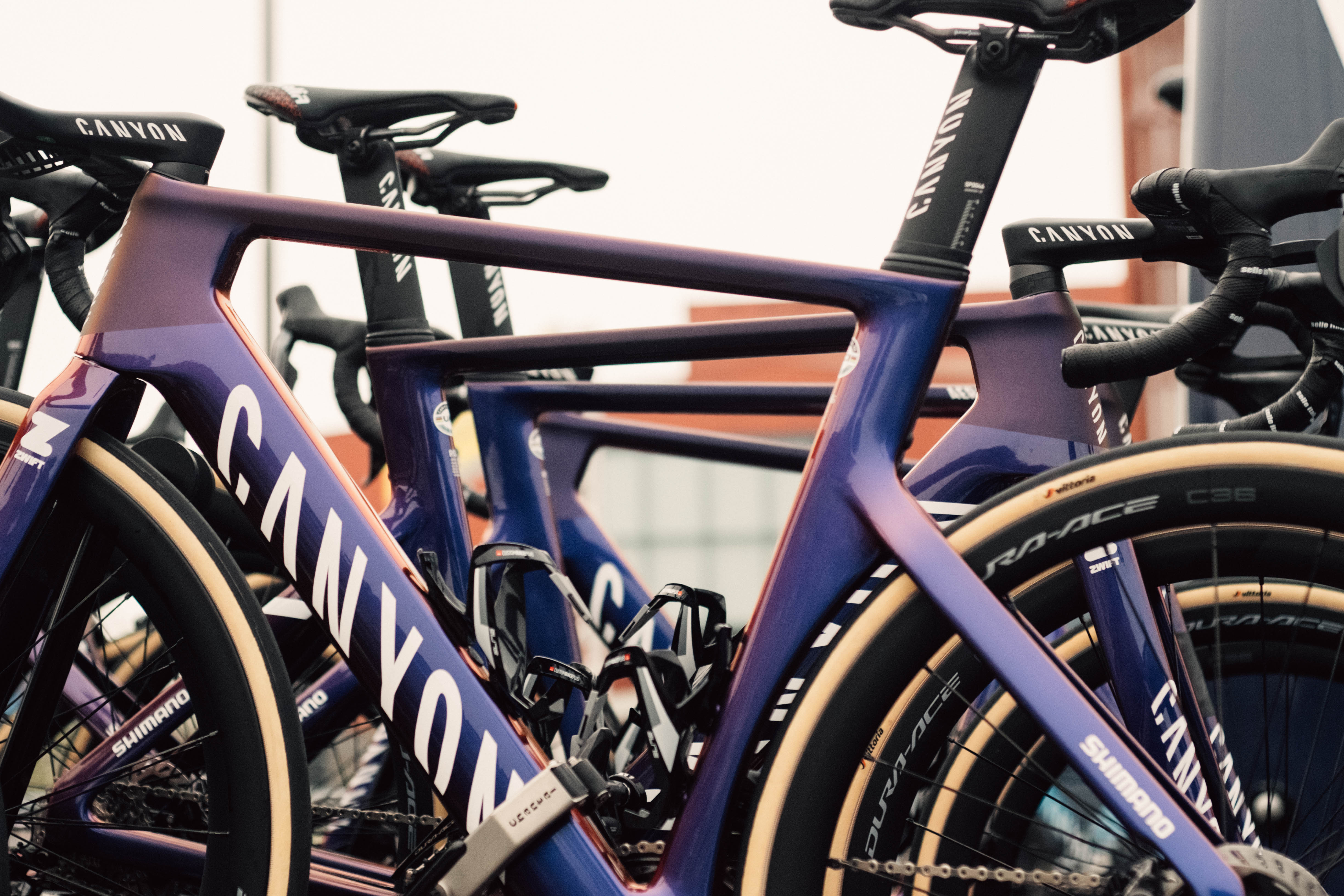
The winning bikes
Men's winning bikes
| Manufacturer | Stages |
| Canyon | 4 |
| Specialized, Colnago, Merida | 3 |
| Pinarello, Look | 2 |
| Trek, Factor, Cervelo, BMC | 1 |
Women's winning bikes
| Manufacturer | Stages |
| Canyon | 4 |
| Specialized | 4 |
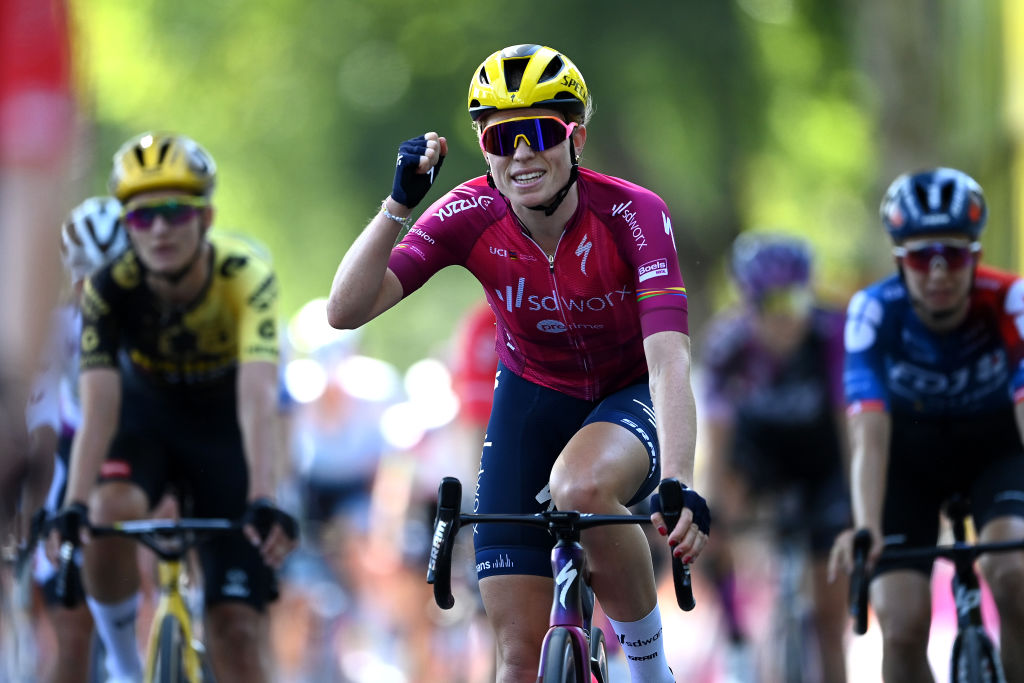
In a selection of winning brands equally as diverse as 2023, ten manufacturers can lay claim to a stage win this year. Only half though bagged multiple victories, the rest picking up a single stage each. Though grand tours are the longest races of the year, when a rider like Jasper Philipsen picks up four stage wins alone it does begin to skew things somewhat. Last year Cervelo picked up six stage wins with three different bikes under three different riders. Here Canyon, only with the soon-to-be-outdated Aeroad, picked up the most wins with four, with Specialized, Merida, and Colnago each seeing the top step thrice with different riders, and Pinarello and Look also bagging a brace each with multiple riders. With the exception of Merida, each of these sets of wins were on the same bike (for each brand), but Merida also picked up three stages, one with its aero Reacto and two with the lighter, more general-purpose Scultura. Despite being the only rider on the new Canyon Aeroad, Mathieu van der Poel didn't manage to bag a win himself.
The Jumbo-Visma domination of last year was only really present in the GC battle, rather than on individual stages. Only a TT win for the team has meant a more open field for other suppliers.
Get The Leadout Newsletter
The latest race content, interviews, features, reviews and expert buying guides, direct to your inbox!
In the women's peloton it was a dead heat between Canyon and Specialized. Unfortunately we don't have the same bank of data for the women as we do the men, but everything starts somewhere. While it may seem like a much more dominant display by two manufacturers, it's also a factor that two teams were so incredibly dominant. Of the eight available stages, six were won by either SD-Worx or Movistar. SD-Worx accounted for all of the Specialized wins, but Canyon is also a sponsor of Canyon-SRAM and Fenix-Deceuninck, the only other two teams to pick up wins, helping even the score.
Amalgamated though, Canyon edges Specialized with eight stage wins to seven across the men's and women's Tours, but when you look at it from the point of view of individual bike models, then it becomes a dead heat yet again between the Specialized Tarmac SL7 and the Canyon Aeroad CFR, each taking 6 wins.
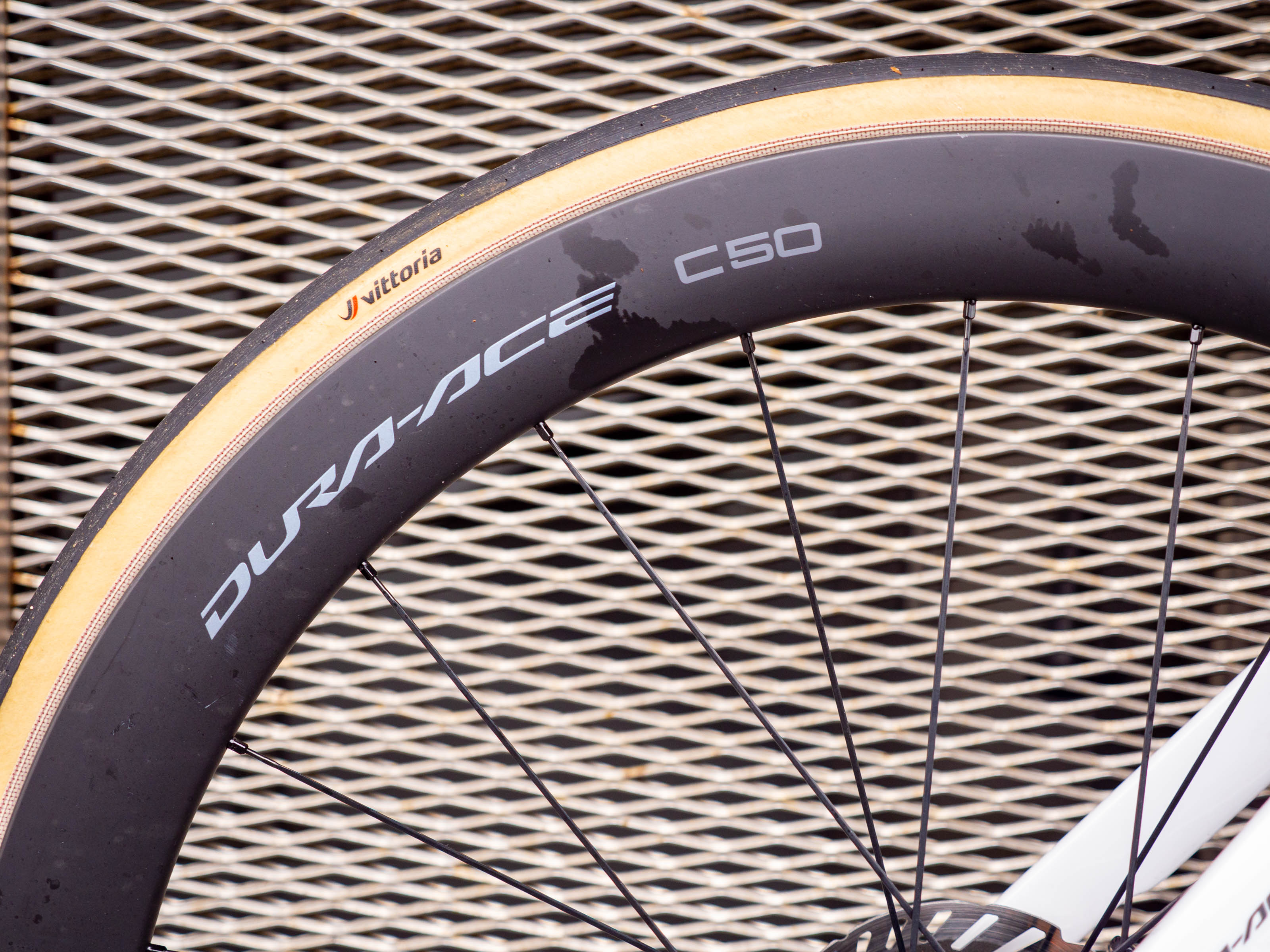
The winning wheels
Men's winning wheels
| Brand | Stages |
| Shimano | 6 |
| Roval, Enve, Vision | 3 |
| Corima | 2 |
| Black Inc, Bontrager, Campanolo, Reserve | 1 |
Women's winning wheels
| Manufacturer | Stages |
| Roval | 4 |
| Zipp | 3 |
| Shimano | 1 |
Nine wheel manufacturers picked up stages at the men's Tour this year, though fewer (five, in this case) picked up more than a single win. Shimano cleaned up with six; four of which came thanks to Jasper Philipsen, and another two from the pair of Ineos stage wins on stages 13 and 14. Enve under Tadej Pogacar and Adam Yates, Roval with Jai Hindley, Kasper Asgreen, and Jordi Meeus, and Vision with Pello Bilbao, Wout Poels, and Matej Mohoric picked up three wins each. Cofidis, after finally winning not one but two stages after 15 years, helped Corima get its name on the multi-stage winning roster. As we will go into later it seems like we’re in an age, in the pro peloton at least, where ‘climbing wheels’ are a thing of the past.
In the women's Tour, Roval picked up half of the stages on offer, thanks to SD Worx's four stage wins. Zipp, thanks to both Movistar and Canyon-SRAM, made it onto the scoresheet after failing to land a win in the men's race. The single stage win for Shimano means that, on combining the datasets, Shimano and Roval are tied for overall wins with seven stages apiece. Despite the smaller sample size it was also a clean sweep for mid-depth wheels, with no rider winning on anything crazy deep, or super shallow.
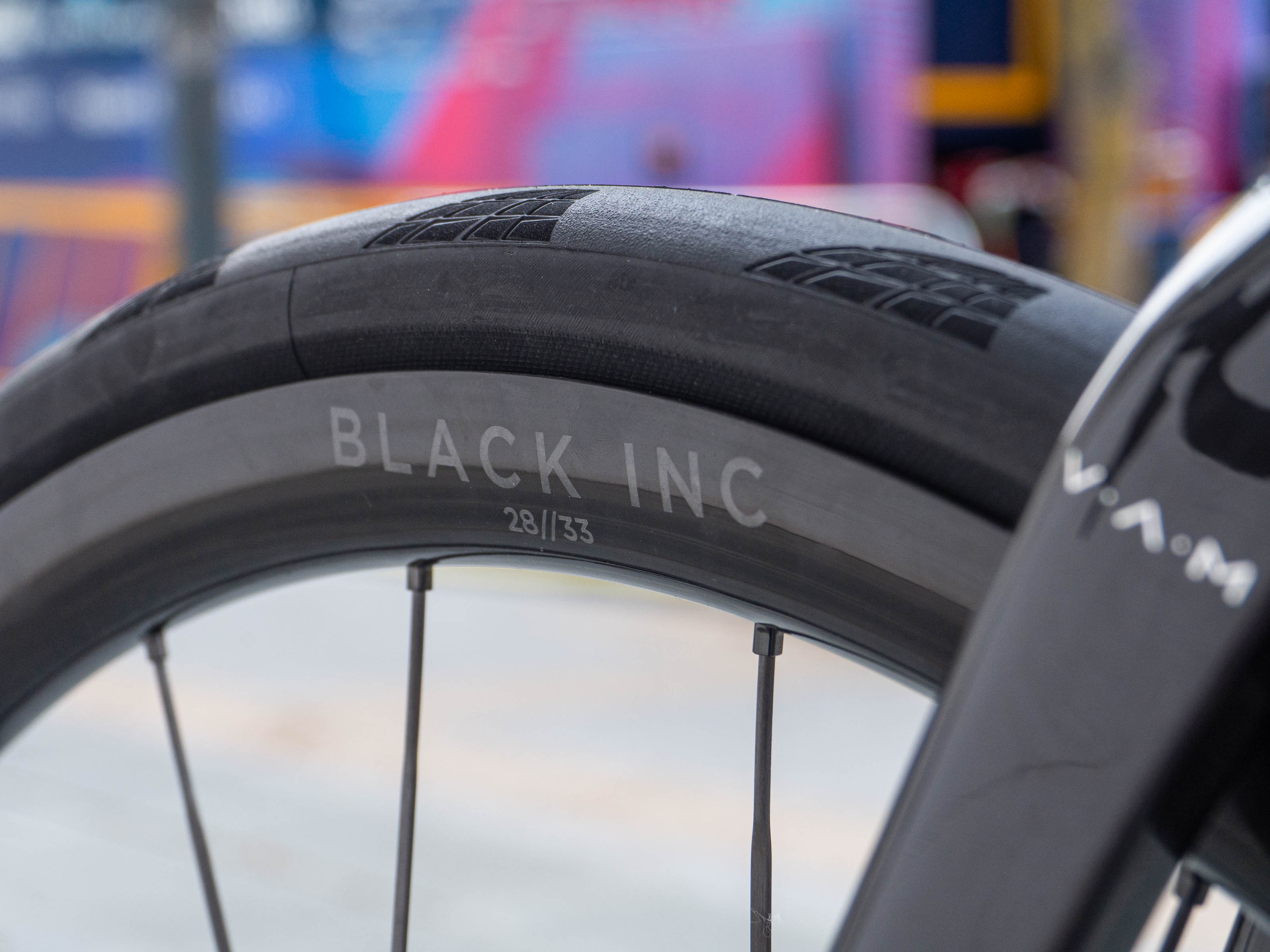
The winning tyres
Men's winning tyres
| Manufacturer | Stages |
| Continental | 9 |
| Vittoria | 5 |
| Specialized | 3 |
| Pirelli, Michelin | 2 |
Women's winning tyres
| Manufacturer | Wins |
| Specialized | 4 |
| Continental | 2 |
| Vittoria, Schwalbe | 1 |
In the last two iterations of the race, Vittoria has come out on top. This year though it has relinquished its crown to Continental, despite riders now rolling on a new version of the Corsa Pro tyre. Continental, with the GP5000S TR, picked up nine stage wins to Vittoria's five, four of which came from Jasper Philipsen alone, and the other from the overall winner Jonas Vingegaard on his breathtaking time trial win.
Specialized tends to sponsor teams as a package (bikes, wheels via Roval, and tyres), and so picked up three wins, with Michelin and Pirelli also picking up a brace each. Again, something to delve into later on, but tubeless is dominant to the point I’d be surprised to see any team still on tubular tyres next year.
SD Worx's dominance again skews the women's results heavily in favour of Specialized rubber, but more so it seems the women's peloton is more forward looking in terms of tyre systems; every stage was won on tubeless. Continental put on a good showing despite not taking the overall for the women, but over both races the German brand won more stages than any other.

The winning groupsets
Men's winning groupsets
| Manufacturer | Stages |
| Shimano | 18 |
| SRAM | 2 |
| Campagnolo | 1 |
Women's winning groupsets
| Manufacturer | Stages |
| Shimano | 5 |
| SRAM | 3 |
Shimano groupsets are so dominant in the men's peloton it’s hard to look past the fact that they picked up 18 of the available 21 stage wins on offer. It also doesn’t look great for SRAM, who despite now sponsoring Jumbo-Visma, only picked up two stage wins. Had the team been as dominant as last year in individual stages it would have been a different story, especially when broken down on a stages per teams sponsored basis, where it would likely have surpassed Shimano. Of course, SRAM won't care much, as they have a yellow jersey to wipe away any tears.
Campagnolo did pick up a single-stage win on Stage 17. And the brand also recently launched its new Super Record EPS groupset. Just clinging onto the edge of the top table of our sport by a set of presumably expertly manicured fingernails. One stage for what was once the most well-represented manufacturer may feel like a fall from grace, as it did last year with SRAM, but when you dig into the numbers it does perhaps represent an equal return on investment to Shimano. The Japanese giant supplies 18 of the top flight teams, and picked up 18 stages as a result. Campagnolo only sponsors AG2R-Citroen by contrast, so in this respect, it’s actually been an equally good Tour for the Italian brand.
The hit rate for SRAM in the women's Tour was substantially better, picking up three of the eight stages on offer, but Shimano extended its lead in the overall stakes by mopping up the remaining five. Campagnolo didn't feature, but it doesn't sponsor any teams in the women's field so that's no great shock.
Overall then Shimano was totally dominant, taking 23 stages in total, a full 79% of the stages on offer. While the Japanese brand may be reporting drastically lower profits this year, its wins have at least improved at the highest level.
Trends and takeaways
Delving deeper than just ‘which bike won most’ we can begin to tease out some obvious and less obvious trends, some may be short-term, some long-term, and some perhaps skewed by Jasper Philipsen being so bloody fast, and SD-Worx being so darned dominant.
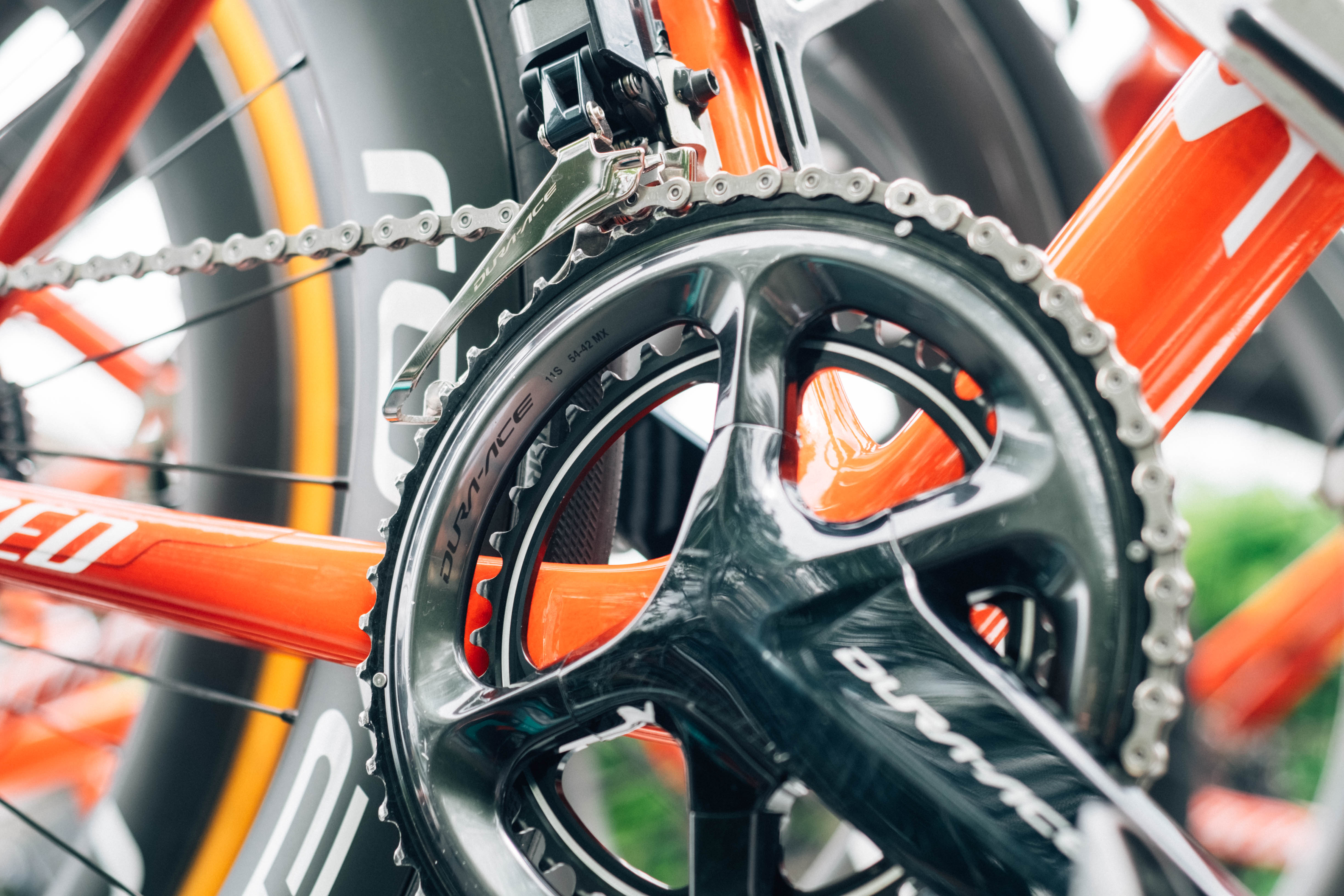
1x isn’t a thing
Despite all the furore when Primoz Roglic won the final time trial at the Giro d’Italia on a 1x gravel groupset, followed by Wout van Aert and Vingegaard both spotted using 1x drivetrains at the Dauphine and in the pre Tour recon rides, not a single stage was won on a 1x setup. The time trial was too hilly, but not hilly enough for a bike swap for Vingegaard. The pan-flat sprint stages were hoovered up by a 2x toting Belgian, and of the riders from Lidl-Trek (who have form for using 1x) seemed to be running 2x out of choice too.
The other team with form in recent years, Uno-X, who famously introduced Classified to the pro peloton, also opted against using the Belgian-brand's two-speed internally geared hub, citing detrimental shifting performance on the rear cassette as their reason.
In the women's peloton too not a single stage was won on a 1x setup, and in addition it did seem that of the SRAM sponsored teams, none of the key players opted to even run a 1x setup at any point during the Tour de France Femmes.
I suspect this is a story we will keep coming back to, and given the easy intersection of a dominant superteam (Jumbo-Visma) and a sponsor whose components all play together nicely across road and gravel, it’s highly likely that we will see 1x wins at a grand tour in future and not just in a TT. Perhaps we just need a crazy steep stage finish to tempt the riders to run it again, so eyes on the Vuelta a España later in the year.
Despite the demise of Aquablue, forced to use 1x at all times, it’s clear that some races do lend themselves to a 1x setup, so ‘not a thing’ may be a gratuitously reductive subheading, but it’s certainly nowhere near becoming more than a novelty for key races like Paris-Roubaix for the time being. When we stop reporting that riders are using 1x is when it’s truly made it as a viable option for all terrains.
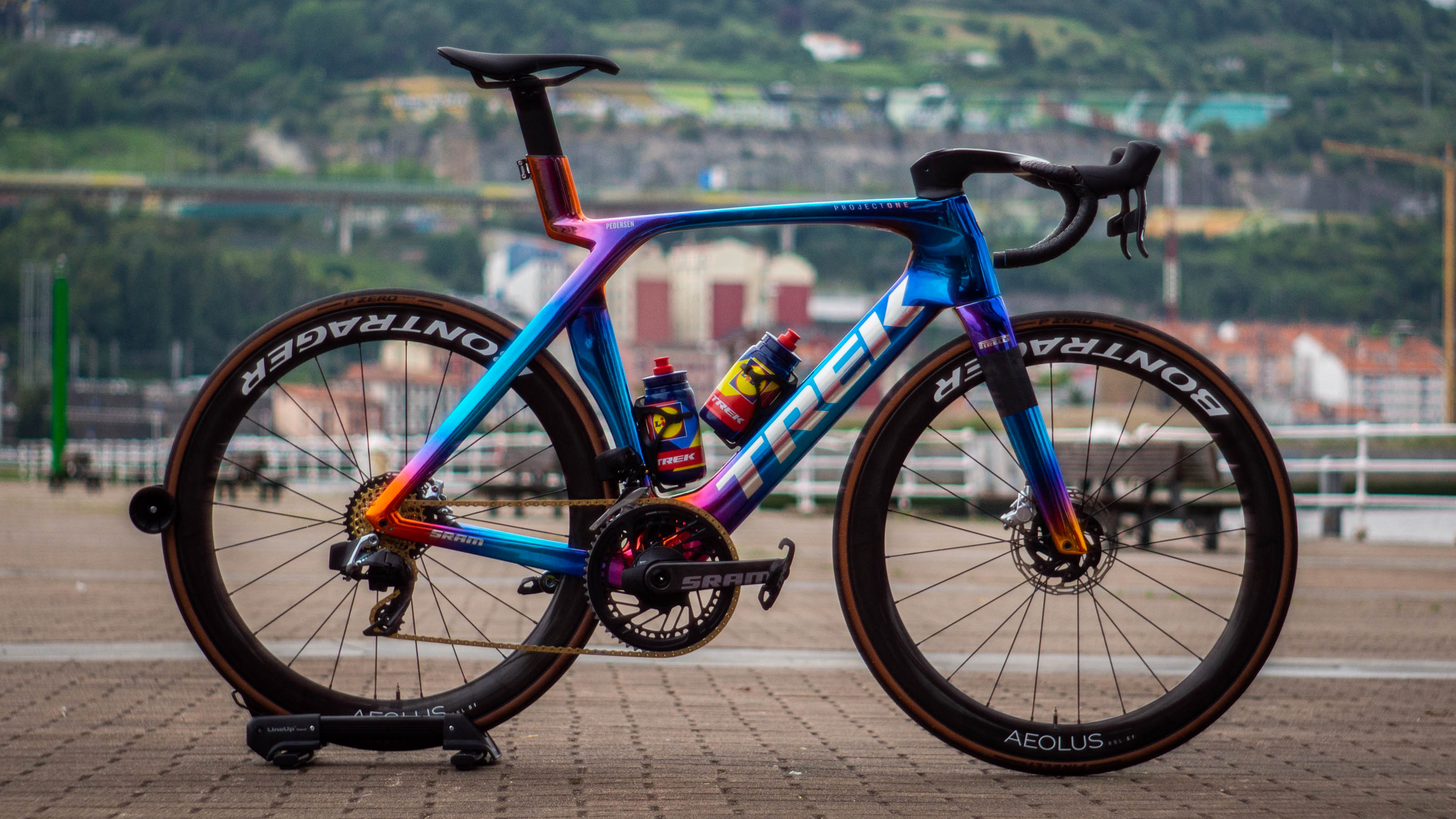
We’re in a post-aero landscape now
In 2022 aero bikes won 10 stages. This year though it was only six, with four of them from a single rider. In a hypothetical world where Fabio Jakobsen was the dominant sprinter it’s entirely possible that this could have been only two. Aero bikes aren't ‘dead’ by any stretch, but the slow coalescence of brands around a ‘one race bike’ concept continues. The Specialized Tarmac, the new Look Blade, the Colnago V4Rs, the Pinarello Dogma, the BMC Teammachine… all just ‘a race bike’, and all prolific this year.
It’s not that aero has gone away, it’s more that it’s become so pervasive in all aspects of equipment and kit design that it no longer merits being a distinct category in its own right. As more and more brands look to a single bike I suspect this trend will continue; there are numerous other models that could easily have swapped in and kept the stats the same. The new SuperSix Evo, the Canyon Ultimate, the Wilier Filante SLR, the Lapierre Xelius, even the Giant Propel is more all-round than it used to be…
This seems to be less true in the women's peloton however, with the aero flag being waved solely by the Canyon Aeroad, which picked up 38% of all the stages. Obviously this is a smaller sample size, and personally I don't think it's sufficiently significant to conclude that the women's peloton as a whole prefers aero bikes over all-rounders.
While the stages being won on the Aeroad were flat or rolling sprint stages, it was a little unusual to see key favourite for the overall Annemiek van Vleuten continue to ride her Aeroad even on the key Tourmalet stage, where so often we see, in teams with the option of a lighter bike like Jumbo-Visma, the riders choosing a more climbing focussed machine. Kasia Niewiadoma, for example, winner of the polka-dot jersey, chose to use the Ultimate over the Aeroad.
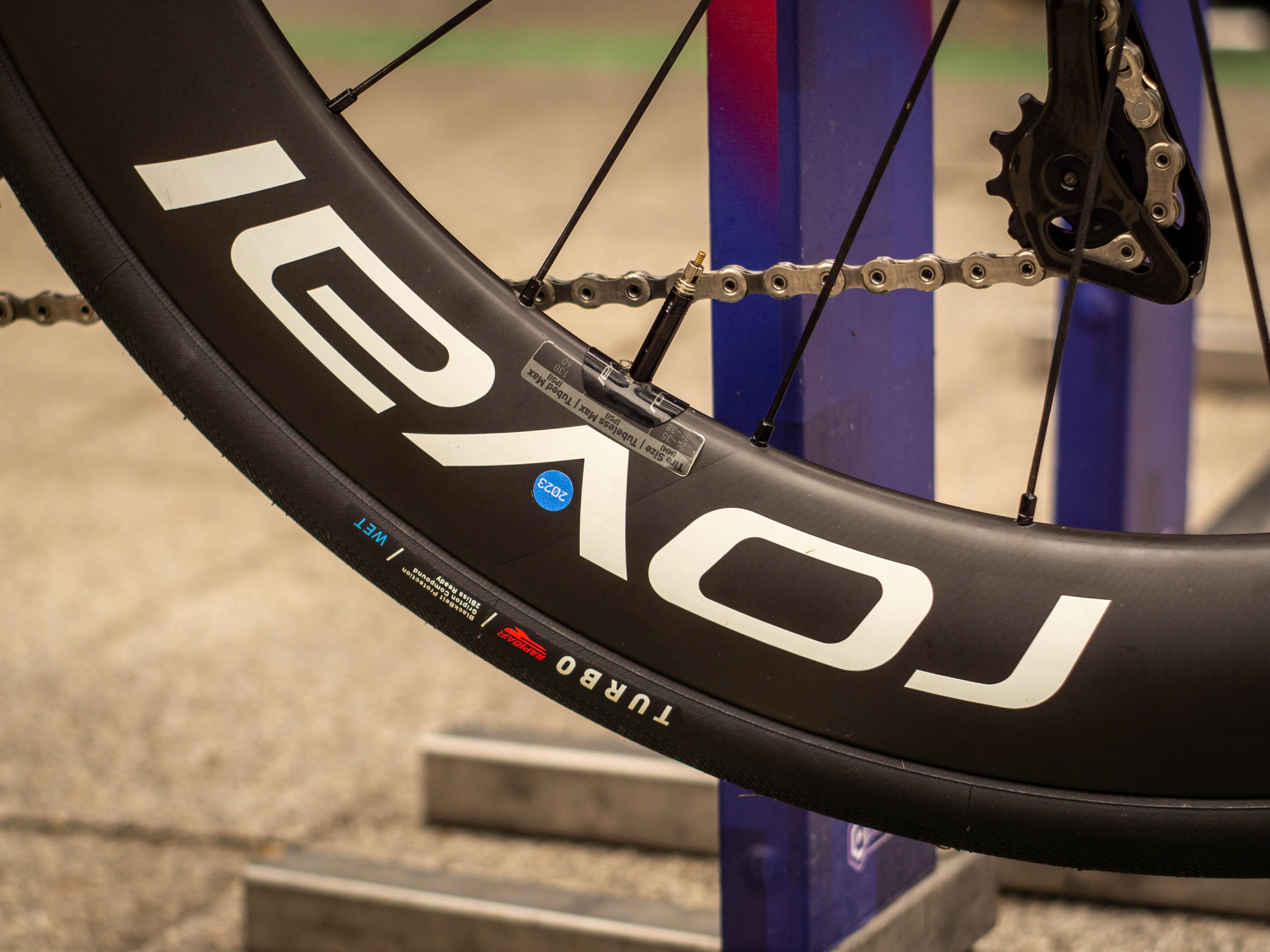
Deeper wheels all the time
On a related note, while aero is less of an obvious feature, deeper wheels were ubiquitous even on the hilly stages. Only Michael Woods, winner of stage 9 on the Puy de Dome, would we consider as using 'shallow' wheels, with the new 28/33mm deep front/back wheelset from Black Inc, noticeably the shallowest winner, launched alongside the new Factor O2 Vam.
The same trend was seen in the Tour de France Femmes too, with mid depth wheels seemingly being used by all riders at all times.
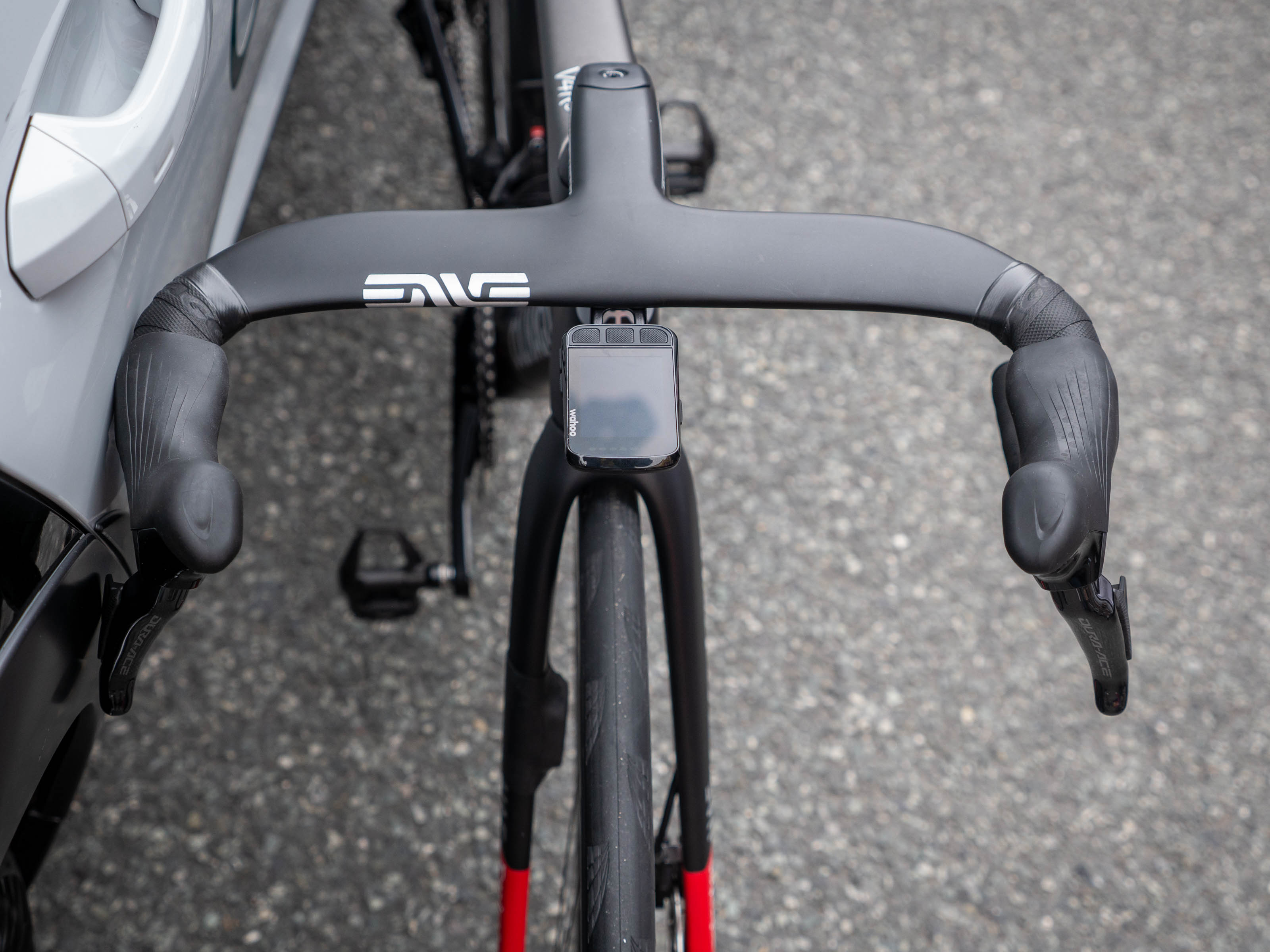
A farewell tour for separate bars and stems
Fans of being able to modify their cockpits and bike fit will certainly be sad to hear the news that, of the 20 road stages of this year’s men's Tour, only three stages were won with a separate bar and stem configuration. Jai Hindley and the Cofidis winners Lafay and Izagirre valiantly flew the flag, although their Look 795 Blade cockpits are subtly disguised to look aero and integrated. But every single other stage was won by a rider using an integrated, single-piece cockpit. Again, another example of aero integration at all levels and on all terrains.
This is likely a trend that will continue, and it may be that no stages next year are won with separate components. The Tarmac from Specialized is the bike we most often see with a two-piece configuration, and while spy shots of the new Tarmac SL8 suggest it can still be used with ‘normal’ bars and stems, the fact that Specialized now has a climbing and a sprinting focused one-piece cockpit suggests that most riders will likely be using them except perhaps for races like Paris-Roubaix.
The women's field were seemingly a lot happier to use integrated cockpits, with every stage being won on them. Given the Specialized Tarmac, which picked up half the stages available, is perhaps the bike we so often seen the men's peloton with a separate cockpit under riders like Julian Alaphilippe it's perhaps indicative of a greater willingness to embrace modern tech rather than opting for 'tradition' among the women.
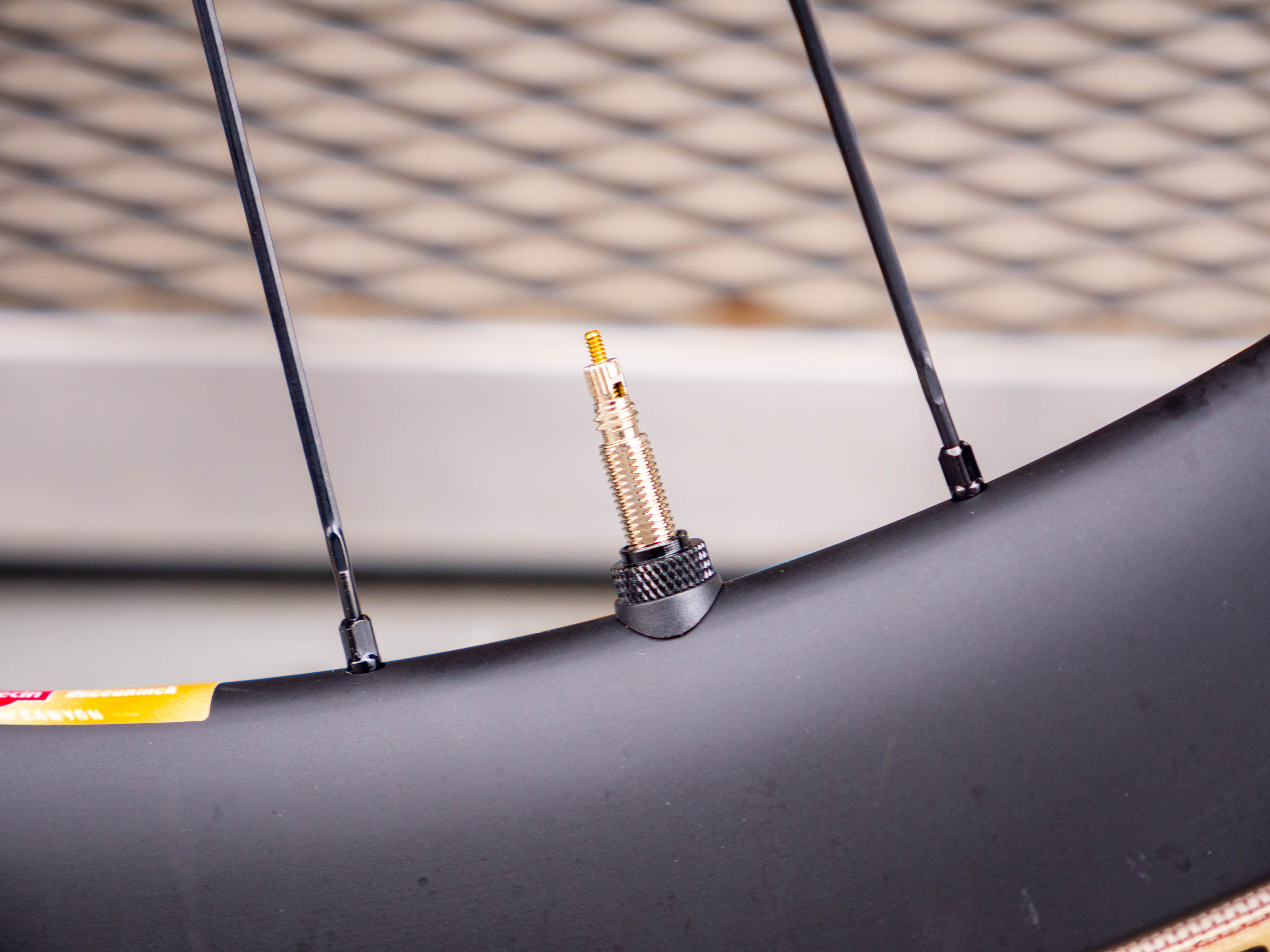
Tubeless is here; get used to it
2021 marked the last year a stage was won with rim brakes. The 2023 men's Tour had the feel that not only might it be the last time a separate bar and stem would top the podium, but also the last time that tubular tyres and inner tubes would too. Tubeless setups won 18 stages, with tubs taking two thanks to Cofidis, and inner tubes claimed one thanks to Mads Pederson and his team's sponsor Pirelli, whose 'Smartube' TPU inner tubes are preferred by some riders.
Given that Cofidis will almost certainly be using tubeless wheels next year thanks to new models from Corima (and that they only win stages every 15 years) it’s likely that tubeless may make a clean sweep in 2024. This may rile some curmudgeonly readers up, and also my colleague Tom, but road tubeless is here to stay and dominates things at the top end. Tubular tyres are as good as dead, and inner tubes may well simply fade into the lower end of tyre tech as time progresses.
As per the integrated cockpits, every single stage of the Tour de France Femmes was won on tubeless tyres. A small sample size, again yes, but it's also hard to comprehend a future edition of the TDFF where stages are won with inner tubes or tubular tyres.

Will joined the Cyclingnews team as a reviews writer in 2022, having previously written for Cyclist, BikeRadar and Advntr. He’s tried his hand at most cycling disciplines, from the standard mix of road, gravel, and mountain bike, to the more unusual like bike polo and tracklocross. He’s made his own bike frames, covered tech news from the biggest races on the planet, and published countless premium galleries thanks to his excellent photographic eye. Also, given he doesn’t ever ride indoors he’s become a real expert on foul-weather riding gear. His collection of bikes is a real smorgasbord, with everything from vintage-style steel tourers through to superlight flat bar hill climb machines.